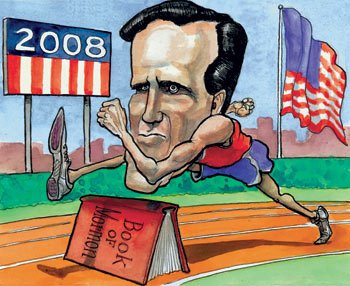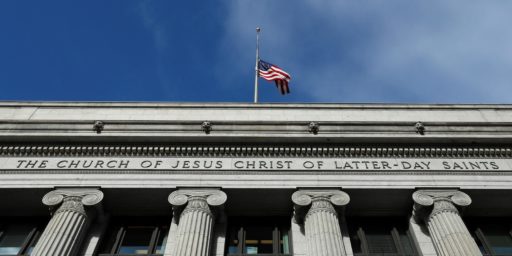Atheists in Foxholes
Amusing news from StrategyPage:
The old adage that there are “no atheists in foxholes†does not appear to apply as much as it used to. It turns out that the active duty troops in the American armed forces are somewhat less religious than the population as a whole.
Americans over all are 78 percent Christian, 1.3 percent Jewish, .5 percent Moslem, .4 percent Hindu, 13 percent unknown or none and the rest various other sects and faiths. But the troops are 55 percent Christian, .3 percent Moslem, .27 percent Jewish, .04 percent Hindu, .24 percent Buddhist and 34 percent unknown or no preference. Part of this may be a generational thing, as the troops are younger than the population as a whole. People become more religious as they get older. Another factor is probably education, as the high education standards for recruits means those in uniform have several years more formal education than their civilian peers. More literate too, as people in uniform read at a level a full year ahead of civilians. As people become more educated, they tend to be less religious.
On the other hand, the military is disproportionately rural and, in particular, Southern. One would think that would skew the statistics in the other direction. Plus, unlike their civilian peers, they have constant exposure to unit level chaplains.
Also, while it’s certainly true that very old people tend to “get religion” as they contemplate their mortality, the main explanation for the disparity in religiousity among age cohorts is generational, not biological. That is, as society becomes increasingly secular, it is the youth who are going to be the leading indicators of the trend, since they’re socialized into that new culture in the schools. While I expect that today’s 20-somethings will be more religious in their 60s than they are now, my guess is they’ll be decidedly less so than the current sextegenarians.
While most religions are underrepresented in the military, there are some exceptions. The Mormons (Latter Day Saints), represent 1.3 percent of the American population, and 1.1 percent of the troops. Catholics, which are 25 percent of the population, are 22 percent of the troops. The Mormons are recruited energetically by the military. Mormon families emphasize education and clean living for their kids, which makes them ideal candidates for enlisted or officer slots. Because nearly all Mormon men spend two years as missionaries, and many do this in foreign countries (after learning the local language at Mormon schools), Mormons are particularly sought after for intelligence, translation and Special Forces jobs. The largest concentration of reserve Military Intelligence units is located in Utah, a state with a majority Mormon population. If Mormons cannot be enticed into active duty, the armed forces makes it easier for the well educated and multi-lingual Mormons to join these reserve units.
Even so, when American troops work with those from other countries, the foreign soldiers are surprised at how “religious†the U.S. troops are. That’s because the United States has the highest rate of religious participation in the industrialized nations.
It’s odd that Mormons are slightly underrepresented given the heavy recruitment efforts descibed in the piece.






I think the percentages 1.3 to 1.1 are too close to call them “underrepresented.” However, Mormonism doesn’t necessarily equate with patriotism, given the rather conservative (religiously) ethic, and the historic antagonism between Mormonism and the government (e.g., over polygamy).
As well, I’d like to see some survey results on the religiousity of the cohort to compare to the military, because, as you say, comparing the religious makeup to the makeup of the entire population is a little like apples and oranges.
A clarification is needed:
There may be aetheists in foxholes.
There are no aetheists in fighting positions under direct enemy fire.
Bryan: Sure. I just mean “underrepresented” in the sense that, with all the apparent effort aimed at them, they’re not even represented at the same level as they are in the population.
I dunno ’bout that, James. Remember that LDS folk have larger families than the norm. Remember that roughly 50% of the population are women with large families who would have a real hardship finding long-term care for 5 or more kids during deployment. We won’t even mention that a good part of that religious population is still in school.
—